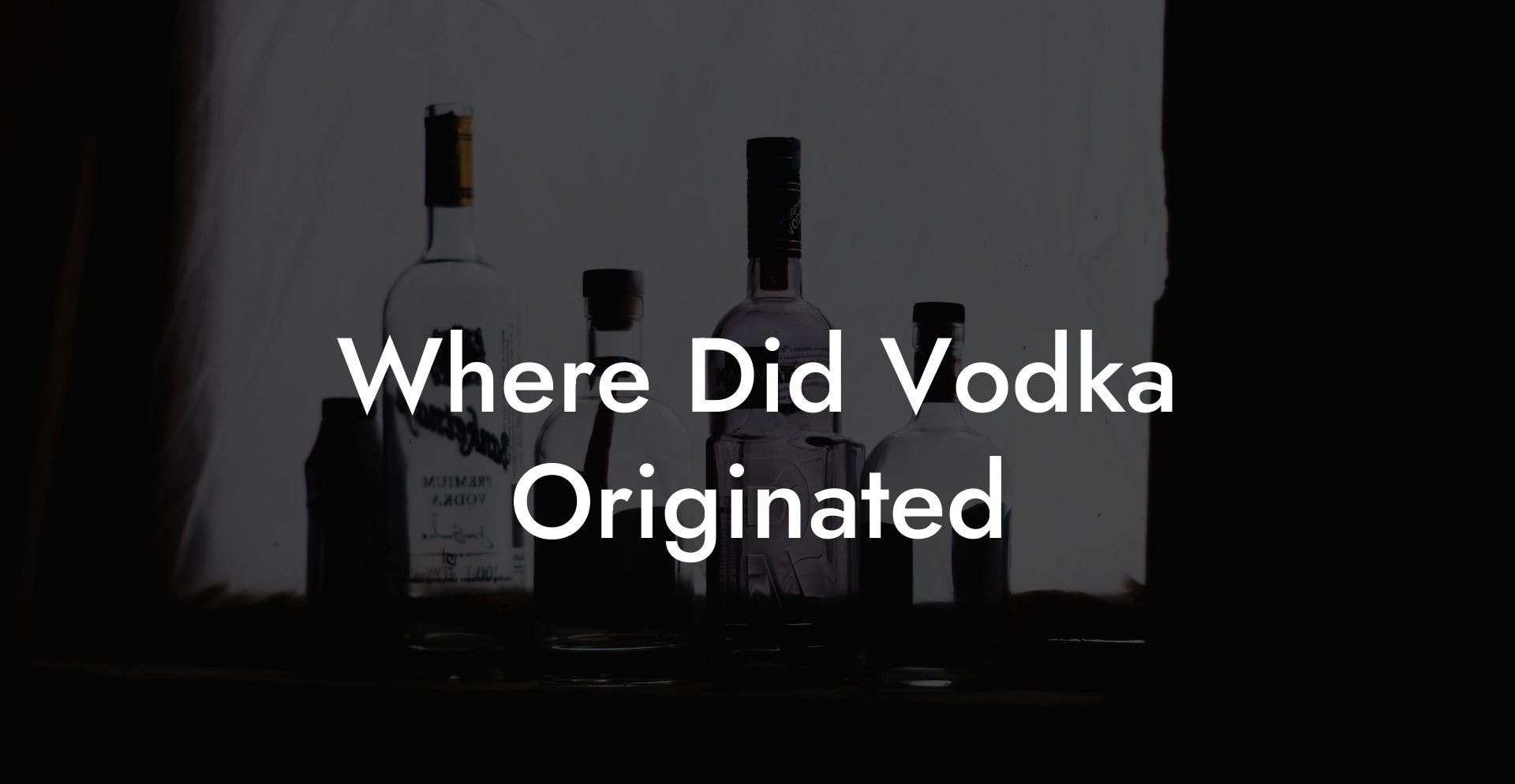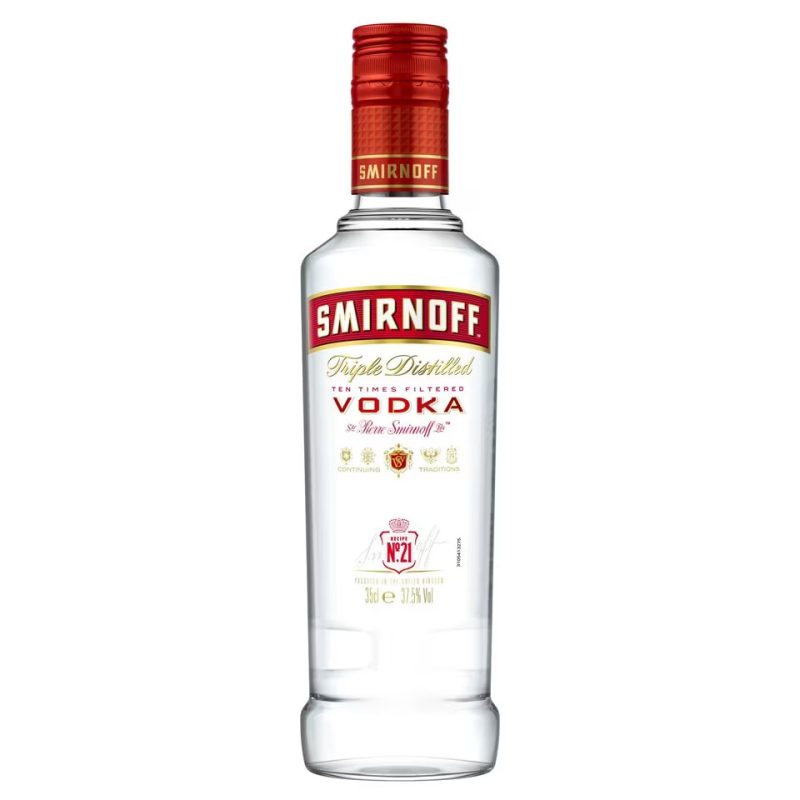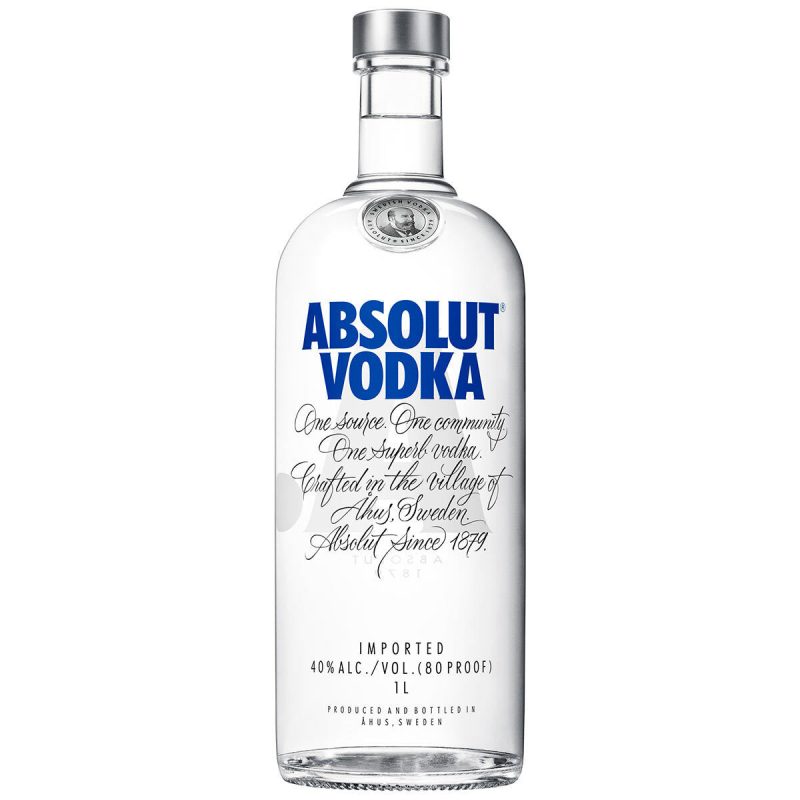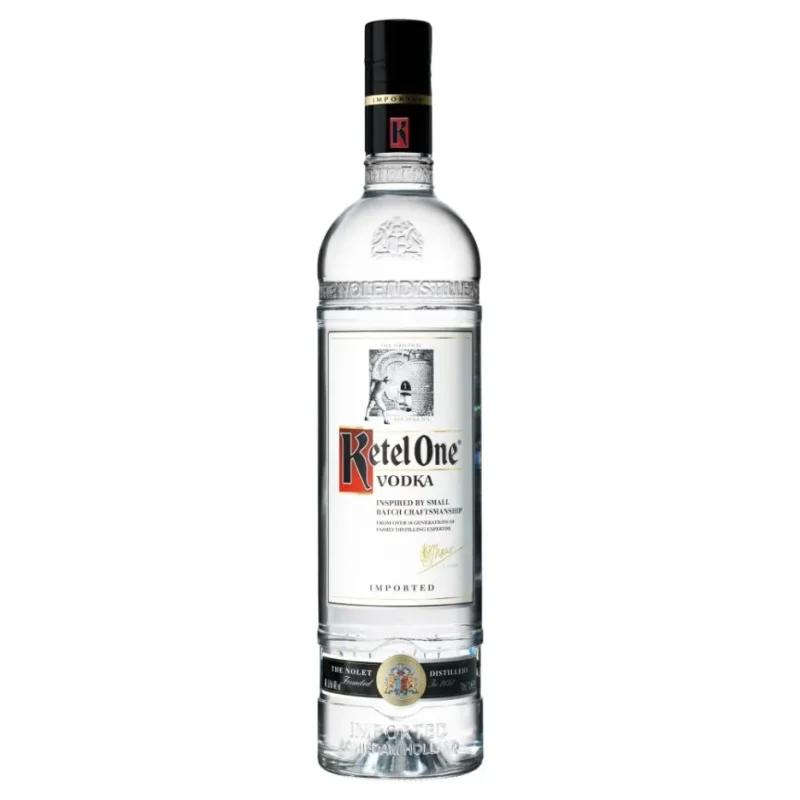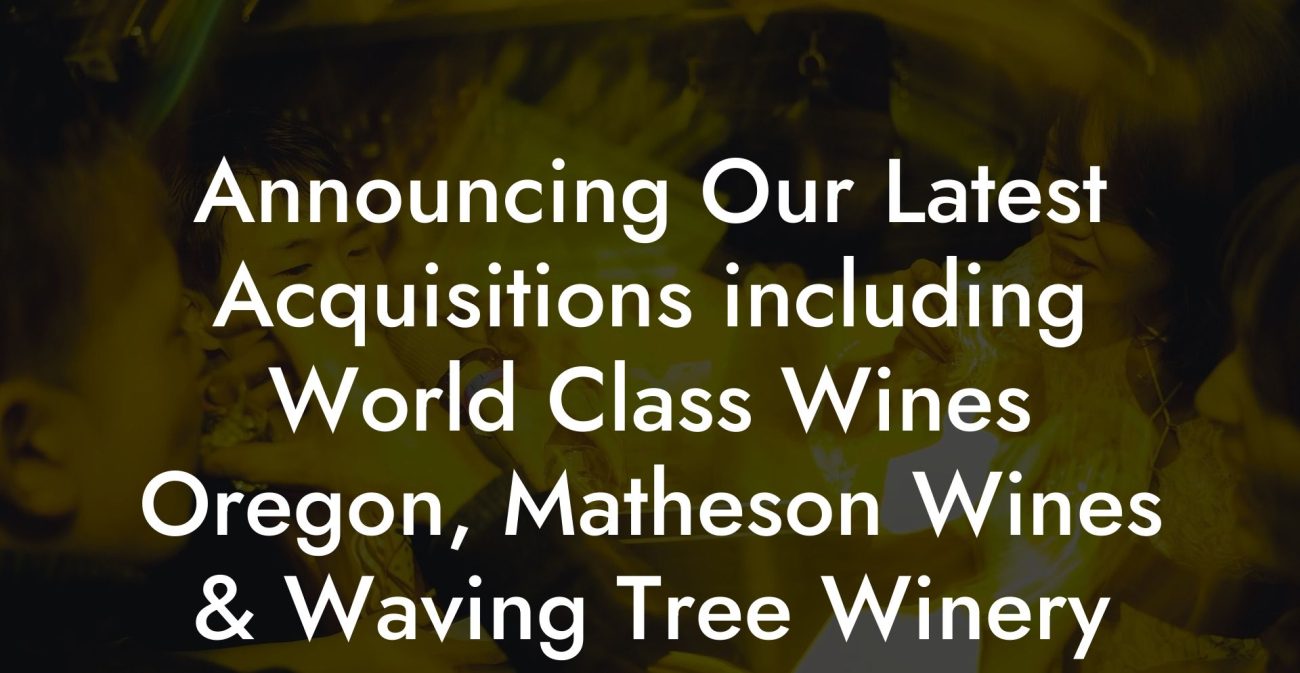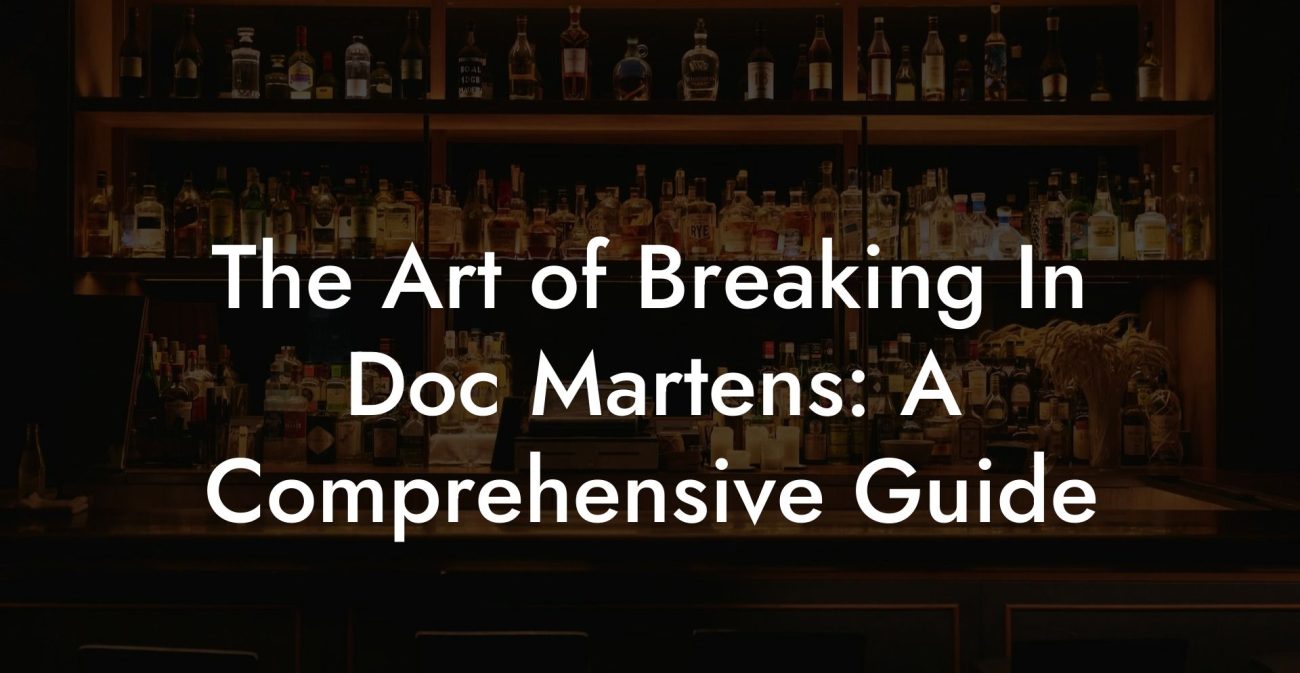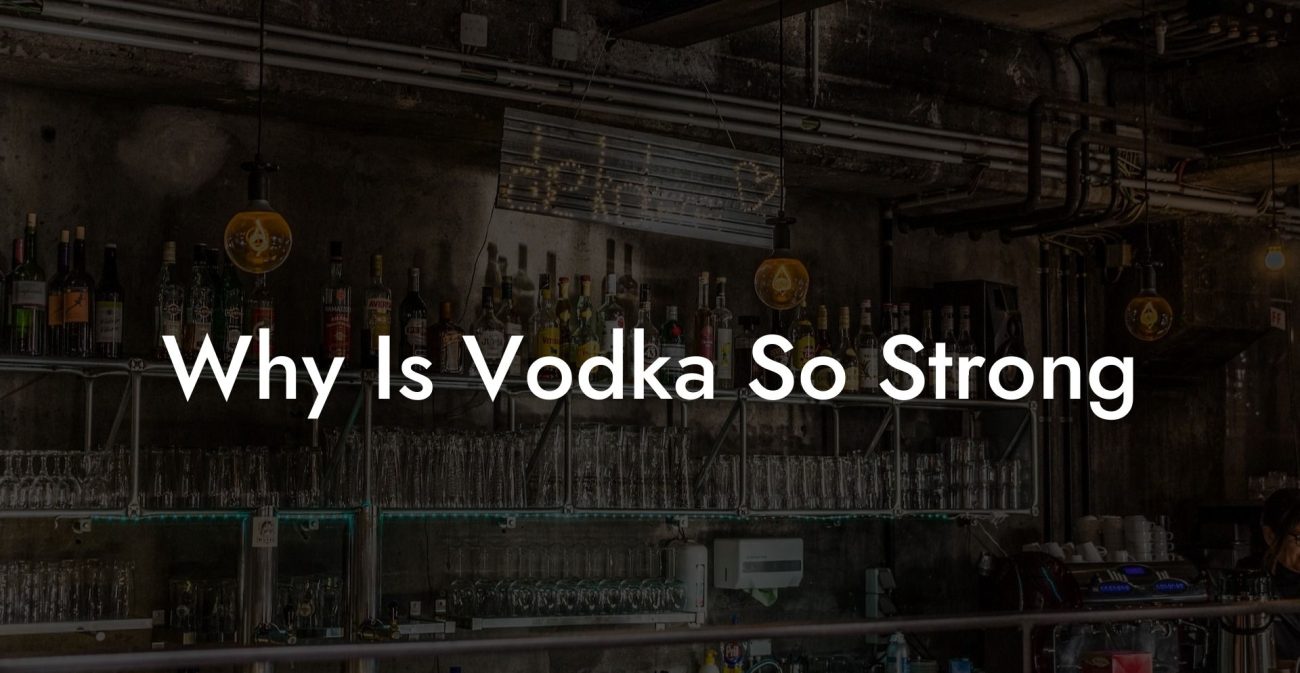Ever found yourself swirling a cocktail while pondering the mysterious origins of vodka, that smooth, versatile spirit that’s taken over happy hours worldwide? Buckle up, because we’re about to embark on a journey steeped in history, chance encounters, and plenty of toasts along the way. From ancient alchemical experiments to the modern-day master distills, the story of vodka is as spirited as the liquid itself. Get ready to dive into a whirlwind tour of vodka’s past, its evolution into a global phenomenon, and why it continues to light up cocktail menus for millennial and Gen Z enthusiasts everywhere.
Where Did Vodka Originated Table of Contents
The Surprising Origins of Vodka: A Journey Through Time
Eastern European Beginnings: The Cradle of Vodka Culture
The Evolution of Vodka: From Local Brew to Global Sensation
How Vodka is Made: A Peek Behind the Curtain
The Vodka Renaissance: Modern Trends and Innovations
Vodka Myths and Misconceptions: Debunking the Rumors
Cultural Impact: Vodka in Art, Music, and Social Rituals
Vodka Around the Globe: Regional Varieties and Innovations
The Art of the Vodka Cocktail: Classic and Contemporary Mixology
Exploring Vodka Pairings: Food, Flavor, and Fun
Resources and Community Support: Your Next Steps in the World of Vodka
Frequently Asked Questions About Vodka
Sipping Into the Future: Vodka’s Enduring Legacy and Your Next Move
Looking For The Best Vodka? You'll Love These Vodka Guides...
The Surprising Origins of Vodka: A Journey Through Time
Vodka’s story is a mashup of legend, folklore, and historical fact, with roots that stretch back centuries. While debates over its birthplace have raged on—whether it hails from Russia, Poland, or another Eastern European locale—the spirit’s evolution is undeniably interwoven with the cultural and historical tapestry of these regions. Early records suggest that vodka emerged from a desire to harness natural distillation techniques, transforming humble grains, potatoes, and even fruits into a clear, potent elixir.
Historically speaking, some of the earliest mentions of distilled spirits in Eastern Europe date back to the 8th or 9th century. However, the term “vodka” (derived from the Slavic word “voda,” meaning water) didn’t become widely used until much later. Despite the murkiness in definitive origins, one thing is nailed down: vodka quickly became a favorite for its versatility and its ability to be enjoyed on its own or as a base in an endless variety of cocktails.
Imagine ancient alchemists mixing fermented grains with rudimentary distillation apparatuses, all in the quest to craft something that would later be celebrated with clinking glasses, raucous parties, and, yes, even a few epic fails. It’s a blend of science, art, and a whole lot of trial and error.
Eastern European Beginnings: The Cradle of Vodka Culture
The heart of vodka’s origin story beats strongest in Eastern Europe, where local traditions and natural resources converged to create a spirit that was as much a cultural symbol as a beverage. For centuries, vodka was the drink of choice in Russia and Poland, celebrated in folklore and rituals alike. In these regions, vodka wasn’t just a drink—it was woven into the fabric of society, used in celebrations, religious ceremonies, and even as a form of medicinal remedy.
In medieval times, distillation techniques were generally reserved for the production of perfumes, medicines, and, of course, spirits. Vodka production began with small, homemade batches, often distilled in family-run operations. Over time, the methods were refined, and vodka became synonymous with purity and clarity. Its simplicity allowed it to transcend social and economic barriers—appealing both to the aristocracy and the working class.
Best Budget Vodkas Ranked
The cultural significance of vodka in Eastern Europe cannot be overstated. It was a drink for every occasion, whether one was celebrating the harvest, marking a religious festival, or simply unwinding after a long day. Vodka festivals, toasts, and family gatherings all revolved around the shared experience of enjoying this potent spirit.
The Evolution of Vodka: From Local Brew to Global Sensation
As time marched on, so did vodka. The spirit’s journey from the small, rural distilleries of Eastern Europe to sleek, modern bars in New York and Tokyo is a testament to its adaptability and enduring charm. Through pivotal historical moments—from wars and revolutions to the rise of industrialization—vodka evolved in production, presentation, and global perception.
In the 18th and 19th centuries, state-controlled distilleries began emerging, standardizing vodka production methods and ensuring a consistent quality that could be exported far and wide. This period saw vodka transform from a rustic regional drink to a refined spirit enjoyed by the elite across Europe. With improved distillation techniques came smoother, cleaner flavors that quickly won over new fans.
The 20th century was a watershed moment for vodka. Following the tumult of world wars and geopolitical shifts, vodka found new life in international markets. American soldiers stationed in Europe developed a taste for it, sparking a trend that would eventually redefine cocktail culture in the West. Brands began to emerge with distinctive marketing campaigns, emphasizing vodka’s clarity, purity, and versatility. Suddenly, vodka wasn’t just something you drank—it was an icon, a symbol of modernity and cosmopolitan taste.
Today, vodka has transcended its humble origins to become a staple at parties, festivals, and social gatherings around the globe. It’s celebrated for its neutrality, its ability to mix seamlessly into countless cocktails, and its role as a blank canvas for creative libations.
How Vodka is Made: A Peek Behind the Curtain
Curious about what really goes into that crystal-clear spirit? Understanding the production process of vodka adds a layer of appreciation to every sip. Vodka can be distilled from a variety of ingredients, including grains like wheat and rye, as well as potatoes, grapes, and even sugar beets. The choice of raw materials can subtly influence the flavor profile of the final product, even if vodka is often celebrated for its neutrality.
The production journey starts with fermentation, where sugars from the raw ingredients are converted into alcohol. This fermented mash is then distilled, typically multiple times, to achieve the high purity and smoothness that vodka is known for. Filtration is a key step as well—many high-end vodkas undergo charcoal filtering to remove impurities, lending them their signature clean taste.
It’s this meticulous process of fermentation, distillation, and filtration that sets vodka apart from other spirits. While some connoisseurs might debate the merits of different bases—wheat versus rye, for instance—the end result is the same: a spirit that’s incredibly versatile and practically flavorless on its own, ready to absorb the personality of any mixer it meets.
The science of vodka production might sound technical, but at its heart, it’s all about creating a balanced, pure product. Whether served chilled neat or blended into a zesty cocktail, vodka’s production story is one of transformation, turning humble ingredients into something extraordinary.
The Vodka Renaissance: Modern Trends and Innovations
The modern era has witnessed a renaissance in the world of vodka. Gone are the days when vodka was viewed as a mere afterthought in the cocktail world; today, it’s at the center of a vibrant, experimental beverage culture. Artisanal distilleries and craft vodkas are booming, and consumers are more adventurous than ever in their taste preferences.
Modern distillers are pushing boundaries by experimenting with unconventional ingredients and innovative distillation techniques. For instance, some brands are adding botanicals and even flavors during the distillation process, creating vodkas that offer a twist—be it a subtle hint of citrus, a burst of berry, or even an unexpected smoky note. These innovations are particularly appealing to millennials and Gen Z drinkers, who crave authenticity, uniqueness, and experiential storytelling in everything they consume.
Additionally, the craft cocktail movement has given rise to an explosion of vodka-based drinks in creative bars and Instagram-worthy lounges. From the classic Moscow Mule served in a funky copper mug to avant-garde, molecular mixology creations, vodka has become the star ingredient in a kaleidoscope of modern cocktails.
Sustainability is another key trend in today’s vodka industry. Eco-friendly practices, from using organic ingredients to innovative recycling methods during production, are reshaping the way vodka is made and marketed. These efforts not only reduce the environmental footprint of production but also resonate with the values of a generation that cares deeply about environmental responsibility.
Vodka Myths and Misconceptions: Debunking the Rumors
With a history as colorful and storied as vodka’s, it’s no surprise that myths and misconceptions abound. One of the most persistent rumors is that vodka is entirely flavorless—an innocuous spirit that simply acts as a base for other ingredients. In reality, the subtle nuances in flavor can vary greatly depending on the base ingredient, distillation process, and even the water used in production.
Another popular myth is that vodka was created solely for military or medicinal purposes. While it’s true that vodka has been used in various traditional remedies and was even part of military rations at certain points in history, its evolution into a social drink was driven by local traditions and the simple joy of toasting to life’s big (and small) moments.
There’s also the misconception that the region of origin definitively determines the quality of vodka. Though Eastern European roots have a strong historical association with premium vodka, modern distillers around the globe have honed their craft, producing excellent vodka that stands toe-to-toe with the classics from Russia or Poland.
Debunking these myths not only sheds light on vodka’s rich history but also invites a more nuanced appreciation of its complexity. Whether you prefer it neat, on the rocks, or as part of a bold cocktail creation, understanding the truth behind the myths elevates your sipping experience.
Cultural Impact: Vodka in Art, Music, and Social Rituals
Vodka has not only dazzled with its taste but also made its mark as a cultural icon, woven into the artistic and social fabric of societies worldwide. In the literature of Eastern Europe, vodka appears as a symbol of resilience, community, and celebration. Think of it as the liquid embodiment of a hearty, unpretentious toast that brings people together, whether in the midst of a crisis or a celebration.
In music and film, vodka often plays a supporting role—setting the mood in gritty noir scenes or serving as the catalyst for a wild night out in a modern dance club. It’s a testament to vodka’s versatility that it can be both a symbol of tradition and a marker of contemporary cool.
Social rituals around vodka consumption continue to evolve. From elaborate vodka tastings hosted in chic urban lounges to rustic gatherings in the countryside where families share home-distilled batches, vodka adapts to its surroundings with ease. For many, sharing a bottle of vodka is more than just about drinking; it’s about creating memories, sharing stories, and forging connections across generations.
This cultural significance has helped vodka maintain its status as a beloved spirit. Whether clinking glasses in celebration or reflecting on a quiet evening at home, vodka remains a faithful companion in life’s unpredictable journey.
Vodka Around the Globe: Regional Varieties and Innovations
As vodka transcended its Eastern European origins, it began to evolve in new regions under the influence of diverse climates, ingredients, and cultural practices. Today, you can find an array of regional vodka varieties, each with its own unique twist. From the crisp, pure vodkas of Northern Europe to the experimental, flavor-infused varieties emerging from boutique distilleries in America and beyond, the spirit’s global footprint is undeniable.
In Scandinavia, for example, the abundant supply of pristine water and a tradition of clean, efficient production methods have resulted in vodkas that are as pure as they are refreshing. Meanwhile, in the United States, craft distillers are experimenting with local produce—sometimes even incorporating organic ingredients and native botanicals—to create a modern take on a classic spirit.
These regional innovations continue to push the boundaries of what vodka can be. Creative distillers experiment with techniques like freeze distillation and botanical infusions to craft vodkas with depth and character. For the adventurous drinker, exploring the world of vodka becomes a journey of discovery, where each bottle tells a story of local flavor, heritage, and innovative spirit.
Whether you’re sampling a frosty Scandinavian vodka or a bold American craft variety, the global evolution of vodka is a saga of innovation. Each variation represents a convergence of tradition and modernity—a fusion that continues to redefine the drinking experience in exciting, unexpected ways.
The Art of the Vodka Cocktail: Classic and Contemporary Mixology
No discussion about vodka is complete without a nod to the art of mixology. Vodka’s neutral profile makes it one of the most versatile spirits when it comes to creating cocktails. It’s the unsung hero behind some of the world’s most iconic drinks, effortlessly blending with a myriad of flavors to create everything from the timeless martini to innovative craft cocktails that push the envelope of taste and presentation.
One of the poster children of vodka mixology is the Moscow Mule—a drink that pairs the spice of ginger beer, the cool bite of vodka, and a hint of lime, all served in an eye-catching copper mug. This cocktail has seen a massive resurgence among millennials and Gen Z, who love its vibrant presentation and refreshing zing. But that’s just the tip of the iceberg.
Today’s bartenders are experimenting with vodka like never before. From infusing the spirit with exotic flavors, such as chili, lavender, or even truffle, to using molecular gastronomy techniques to create visually stunning presentations, the vodka cocktail scene is a playground for creative expression. These innovative approaches not only pay homage to vodka’s storied past but also propel it into a bold, new future where every sip feels like an experience.
Whether you’re a seasoned cocktail connoisseur or just starting your journey into mixology, vodka serves as the ultimate blank canvas. Its ability to blend seamlessly with virtually any flavor profile ensures that there’s always something new and exciting to try—each cocktail a delicious chapter in the ongoing vodka story.
Exploring Vodka Pairings: Food, Flavor, and Fun
Vodka isn’t just a drink to be sipped on its own—it’s also a dynamic partner in the world of food pairings. Culinary creatives and casual snackers alike are discovering that vodka can elevate the dining experience, enhancing flavors and cleansing the palate between bites.
Imagine pairing a smooth, crisp vodka with a plate of savory smoked salmon blinis or enjoying it alongside a rich, hearty stew on a chilly evening. The spirit’s clean profile cuts through fat and salt, providing a refreshing counterbalance to robust dishes. This quality also makes vodka an excellent ingredient in modern gastronomy—think vodka-infused sauces or even desserts that incorporate a splash of this ethereal spirit.
Food and vodka pairings have become especially popular among younger generations who love blending culinary traditions with innovative twists. Social media platforms are awash with stunning photos of artfully arranged dishes paired with bespoke vodka cocktails, turning every meal into an Instagram-worthy experience.
Whether you’re hosting a stylish dinner party or simply indulging in a cozy night at home, exploring the synergy between vodka and food can add an extra layer of enjoyment to your culinary adventures.
Resources and Community Support: Your Next Steps in the World of Vodka
So, you’ve journeyed through the intriguing, sometimes hazy, but always fascinating world of vodka history and culture. But the adventure doesn’t stop here. Whether you’re a budding mixologist, a historian at heart, or just a fan of a good cocktail, there’s a vibrant community out there waiting to share its passion for vodka.
Start by exploring local distilleries and tasting events where you can get an insider’s look at how this timeless spirit is crafted. Many modern distilleries now offer behind-the-scenes tours complete with interactive sessions, tastings, and even online classes that decode the art and science of vodka production.
Join online forums, social media groups, and dedicated blogs where enthusiasts swap cocktail recipes, share historical insights, and debate the finer points of vodka pairings. Whether you’re in search of industry secrets, historical anecdotes, or simply want to connect with fellow aficionados, there’s no shortage of resources and community support at your fingertips.
For the digital natives among us, a variety of apps and podcasts delve into the finer points of spirits, offering not only tutorials but also interviews with master distillers and mixologists. These platforms can serve as an excellent starting point for expanding your knowledge and exploring new trends in the ever-evolving world of vodka.
Finally, remember that every great journey begins with a single sip. Whether you’re crafting a cocktail masterpiece at home or discovering a new vodka brand on the market, let your curiosity guide you. Embrace the learning process, ask questions, and never be afraid to experiment. Your next great vodka discovery might just be a click—or a call—to your local distillery away.
Frequently Asked Questions About Vodka
We know you’ve got questions swirling around like ice cubes in your drink. Here are some of the most frequently asked questions that help demystify the complex world of vodka.
1. Where did vodka originally come from?
Vodka’s origins are hotly debated, with both Russia and Poland laying claim to its beginnings. Historical evidence points to early distillation practices in Eastern Europe, where local resources and traditions led to its unique development. The true birthplace may remain a mystery, but its cultural impact in that region is indisputable.
2. What ingredients are commonly used in vodka production?
Traditional vodka is distilled from grains like wheat, rye, and barley, although potatoes, grapes, and even sugar beets have been used. The choice of base ingredient can subtly affect its flavor, even if vodka is generally prized for its neutral profile.
3. How is vodka different from other distilled spirits?
Vodka is distinct in its high degree of purification through repeated distillation and filtration. This results in a spirit that is exceptionally smooth and versatile, making it an ideal base for countless cocktails.
4. Can vodka have different flavors?
Yes, while traditional vodka tends to be neutral, many modern distilleries experiment with infusions—adding everything from citrus and herbs to more exotic ingredients—to create a variety of flavored vodkas that cater to contemporary palates.
5. What makes vodka popular among millennials and Gen Z?
Its versatility in cocktails, the resurgence of craft distilleries, and innovative flavor profiles have all contributed to vodka’s appeal. The spirit’s storied past also adds an element of intrigue, while its adaptability allows for endless experimentation in mixology.
6. Is vodka better enjoyed neat or in cocktails?
It really depends on your mood! Vodka’s clean, smooth nature means it can be savored on its own, especially if it’s a high-quality craft version, or serve as a fantastic base in a wide array of creative cocktails.
7. How has vodka production evolved over the years?
From small family-run distilleries in Eastern Europe to high-tech, eco-friendly factories around the world, vodka production has seen significant innovations. Improvements in distillation, filtration, and even flavor infusions have helped shape its journey into a modern, global spirit.
8. What role does vodka play in cultural traditions?
Especially in Eastern Europe, vodka is more than just a drink—it’s a symbol of hospitality, celebration, and even resilience. It’s deeply embedded in local folklore, social rituals, and historical legacies.
9. Are there sustainable practices in vodka production?
Absolutely. Many modern distilleries are adopting sustainable methods—from using organic ingredients to implementing energy-efficient processes—in response to growing environmental concerns among consumers.
10. Where can I learn more or even try making my own vodka cocktail?
Check out local tasting events, distillery tours, or online mixology tutorials. There are plenty of resources for both beginners and seasoned enthusiasts eager to experiment with vodka in the creative kitchen of cocktails.
Sipping Into the Future: Vodka’s Enduring Legacy and Your Next Move
At the end of the day, the saga of vodka is a story of transformation, resilience, and endless reinvention. From its murky origins in ancient Eastern Europe to its present-day evolution as a global cultural staple, vodka has continually defied expectations and evolved alongside society. Its ability to adapt—whether through innovative production methods, creative cocktail recipes, or sustainable practices—ensures that vodka will remain a beloved spirit for generations to come.
For those ready to embrace the next chapter in their vodka journey, there’s no shortage of avenues to explore. Kick off your adventure by diving into local distillery tours, signing up for cocktail-making workshops, or simply experimenting with different vodka cocktails at home. Engage with communities online where experts share tips, trade recipes, and celebrate the heritage of this timeless spirit.
In a world where every sip tells a story, your exploration of vodka not only enriches your palate but also connects you with centuries of tradition, modern innovation, and a community that’s as passionate as you are. So raise your glass, toast to the past and the future, and savor every moment of this never-ending voyage.
Remember, the journey doesn’t end here. Embrace the spirit of exploration with every cocktail you craft, every new vodka brand you try, and every conversation you share with fellow enthusiasts. Your next step is as vibrant and exciting as the liquid it celebrates.
Cheers to discovering, experiencing, and celebrating the ever-evolving world of vodka—one refreshingly clear sip at a time!

